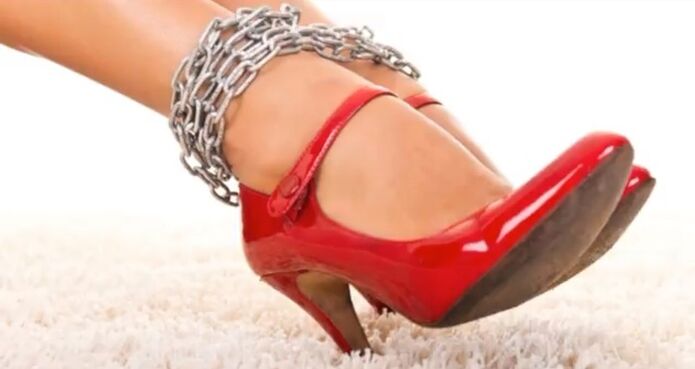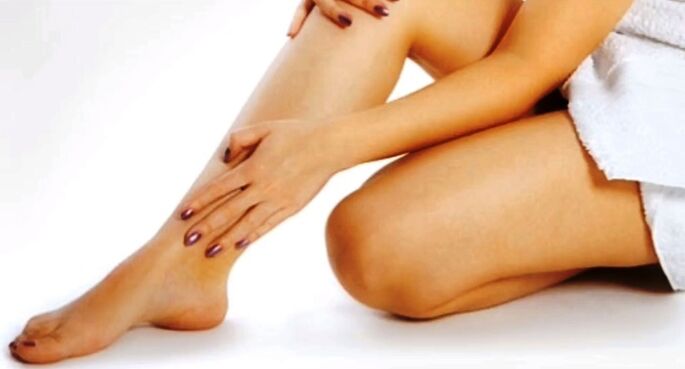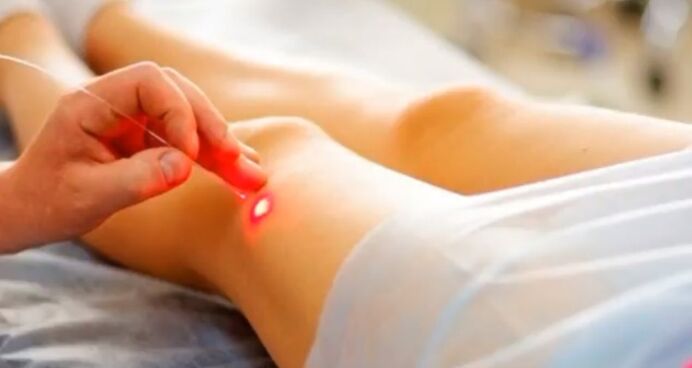Varicose veins or varicose veins is a pathological process that many people face. In most cases, the disease affects the vessels of the legs, leading to elongation, deformity, thinning of the vascular walls. In addition, the valves inside the veins stop performing their full functions, which disrupts systemic circulation and stagnates blood in the veins.
Under the influence of the described factors, the vessels increase in size, appear on the surface, appear through the skin. As a result, an entire vascular network is visible on the surface of the skin, often with nodules and food ulcers. However, apart from aesthetic disorders, the problem is much deeper and is often accompanied by painful sensations.
The nature of varicose vein pain
First of all, it is important to understand that the meaning of "very often" does not mean that pain is accompanied by 100% of varicose veins. Much depends on various factors, the individual characteristics of the patient's body and even in the later stages of the pathological process, there may be no pain.
If we classify the painful sensations, we will first consider their location:
- In most cases, the pain syndrome is located directly at the site of the vascular lesions, in their deformity.
- In second place in terms of frequency of localization is the area of the gastrocnemius muscle, while the pains themselves are located closer to the iliac region of the foot.
- The least chance of detecting pain syndrome goes to the ankle area.

Of course, the likelihood of pain in the legs increases as the pathological process progresses. This is due to the aggravating condition of the blood vessels, their growth, the evolution of stagnant processes and, consequently, the increase in vascular pressure. Eventually, the pressure can rise so much that the walls of the vessel will not be able to withstand, this threatens with internal bleeding, formation of hematomas and trophic ulcers.
Therefore, the nature of the pain depends on the degree of development of the disease:
- In the early stages, painful or rather unpleasant sensations of a pulling or squeezing character are caused by swelling of the legs. It is important to understand that along with the disturbances in the blood flow, fluid is retained in the feet, which causes swelling. In the early stages, the swelling is periodic, occurs more often at night and the discomfort is caused by fatigue, walking in shoes during the day, in extreme cases by the tension of the skin.
- The fact of fatigue deserves special attention. With varicose veins, the legs get tired faster. Initially, this is expressed during prolonged physical exertion during the day (if the patient stands for a long time, walks a lot, etc. ). However, as the disease progresses, fatigue becomes more frequent and more pronounced, due to which characteristic painful sensations are felt. In this case, the pain is dull in nature, also pulling or aching.
- Approximately in the second stage of the disease, with worsening of the condition of the veins, more severe deformity and dysfunction of the valves of moderate severity, patients complain of the effect of severity. In this case, the pain is characterized as eruptions, in some cases even called acute. This is due to the increasing pressure on the vessels and if at first it is enough to lie down and put your feet on a hill to relieve the pain, in the future you will have to deal with them using medication.
- The most probable is the development of pain syndrome, as well as its increased intensity in the case of the development of varicose veins in the final, fourth stage. It is at this stage that vascular deformity and vascular pressure reach a maximum.
It is difficult to describe more accurately the characteristics of painful sensations with varicose veins in the legs. This is due to the individual characteristics of each patient's body, as well as the characteristics of the course of the disease. However, the pain can be felt as follows:
- Stupid.
- Pulling.
- Painful.
- popping.
- Compressive.
- Sharp.
- Similar to rezi.
Also in the second, and even more often in the third stage of the development of the pathology, the pains are accompanied by muscle cramps, which bother the patients mainly during the night sleep.

Causes of painful sensations
Understanding where varicose vein pain comes from can help you deal with this problem more effectively or prevent pain from occurring. Thus, the pains arise under the influence of the following reasons:
- Pathological changes in the vascular layer slow down blood circulation in certain areas of the veins. This leads to a decrease in blood flow, due to which oxygen deprivation begins and pain occurs.
- The bloodstream promotes the elimination of waste products, which are constantly produced by the body in small quantities. Due to the reduction of blood flow and its stagnation, the decomposition products are removed slowly, which leads to the appearance of toxins that poison the living cells, this process also causes painful sensations.
- Eating disorders that appear in the last stages of the development of varicose veins and with the progression of the disease only intensify, causing more and more acute pains, also contribute to the appearance of pain.
The pain increases with physical exertion, fatigue of the legs, in most cases they become particularly intense in the afternoon or evening.
Methods of treating the pathology
For the complete elimination of pain, it is necessary to direct all forces in the treatment of the pathological process. To do this, you should consult a doctor who will make a diagnosis, based on which he will prescribe a treatment that is more suitable for a particular patient.
The treatment will take a certain amount of time, during which the patient will be tormented by the pain. Therefore, it is important to understand not only how to treat varicose veins, but also to know the methods of pain relief.
First aid in the fight against pain
Elimination of pain is only a symptomatic part of the treatment, in most cases it does not affect the solution of the main problem - varicose veins.
However, it is very important to eliminate the pain, consider the main methods of dealing with unpleasant and painful sensations:
- In the early stages of the disease, the pains are unstable, their intensity is rather low and they appear mainly at night. In such cases, it is enough to take a lying position and lie your feet on a pillow or just lean them against the wall, so that your feet are above body level. This position facilitates blood flow, thus reducing pain and swelling.
- It is also very useful to do a light massage, kneading the lower extremities with massage movements and rubbing. Remember, you can stretch your legs during the day, which is very helpful in the later stages of the disease.

Traditional methods of pain relief
In case of severe pain that bothers you constantly, as well as in cases where there is no way to massage or relax, you should seek medical help. Of course, only one doctor has to prescribe a medicine, but in most cases the following medicines are used:
- Especially in gel form - we are mainly talking about non-steroidal anti-inflammatory drugs (NSAIDs) that effectively relieve pain, as well as have strong anti-inflammatory and moderate antipyretic action.
- In some cases, you can resort to analgesics, but with varicose veins, their effect is insignificant and short-lived. These are mainly analgesics and antispasmodics.
- If the painful sensations are accompanied or aggravated by convulsions, it is worth talking to your doctor about the use of muscle relaxants, which help reduce muscle spasms.
- Also, traditional methods of treating painful sensations with varicose veins in the legs include the use of special compression stockings, socks or tights. This method is considered the most effective in terms of pain relief and its effect is greatest. The mentioned underwear should be bought only from pharmacies and because they have different degrees of compression, consult your doctor first.
Folk remedies
In folk medicine, there are also many ways to eliminate or prevent the pain caused by the development of varicose veins. Consider some of the most effective methods and recipes:
- Horse chestnut - an alcoholic tincture should be made from the fruit of this tree. To do this, grind 100 grams of peeled chestnuts, place in a glass dish and pour 500 milliliters of vodka. Place the container in a dark place and leave it for 7-8 days at room temperature, stirring once a day. After that, the tincture is filtered and the feet are rubbed with it before going to bed or even during the day if the pains bother during the day.
- Products based on beeswax or propolis are highly effective in combating varicose veins. To prepare the medicine, take 80-90 grams of propolis, grind it and pour 300 milliliters of medical alcohol into a glass container. The agent is infused for 30 days or until the propolis is completely dissolved, all this time it is also kept in a dark place, shaking it periodically. Once the medicine is ready, you can rub your feet or apply lotion.
Prevention of pain
It is also important to understand that in the early stages of the disease, when the pain is not severe or rarely bothersome, but treatment has begun, it will be sufficient to follow the recommendations that reduce the likelihood of painful sensations:
- Avoid wearing high heels.
- Make sure your shoes are comfortable.
- In the cold season, when you work indoors, it is important to change from boots to lighter and more comfortable shoes.
- Try to minimize stress on your legs.
- It is impossible to maintain a static position for a long time. If you stand a lot, try to sit longer, but if you sit a lot, it is important to take periodic walks or at least warm up.
- During the day, try to massage the lower extremities, 5 minutes of light massage will protect you from pain during the day.
- It is also important to follow a healthy lifestyle, start doing light sports, eat right, give up bad habits, etc.














































